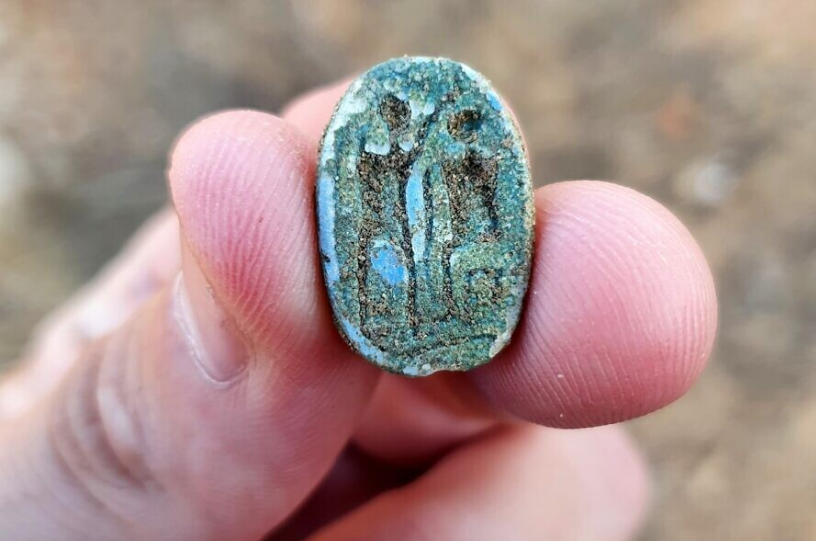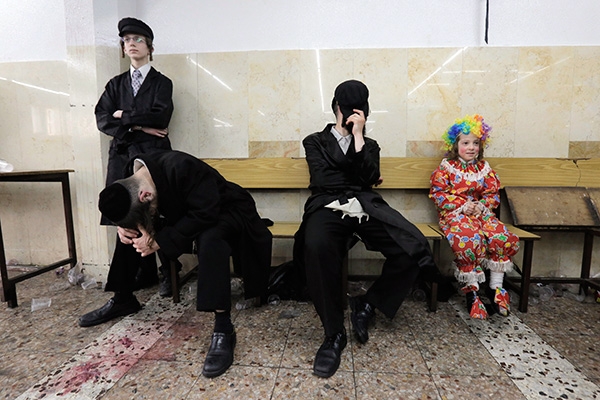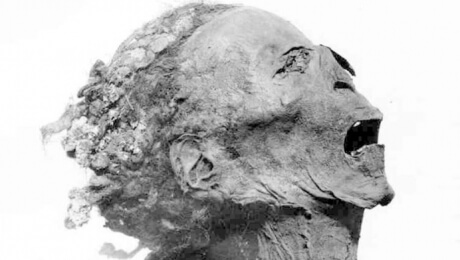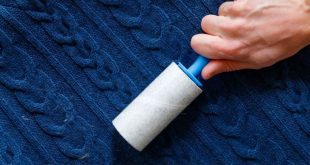Tour guide for eighth-grade pupils in Azor comes up with find, which likely depicts an ancient Egyptian pharaoh bestowing authority on a local Canaanite ruler
A 3,000-year-old Egyptian scarab seal was found last week during a middle school field trip in Azor, just outside Tel Aviv, with the tour guide describing the find as “the dream of every amateur archaeologist.”
“We were wandering around when I saw something that looked like a small toy on the ground,” said Gilad Stern of the Israel Antiquity Authority’s Educational Center, who was leading the tour.
“An inner voice told me: ‘Pick it up and turn it over.’ I was astonished. It was a scarab with a clearly incised scene, the dream of every amateur archaeologist. The pupils were really excited,” he added, according to a press release by the Israel Antiquity Authority (IAA).
The scene depicted on the scarab — which shows two figures, one seated and the other, with an elongated head likely representing the crown of an Egyptian pharaoh, raising its hand above the first figure — is possibly an ancient pharaoh bestowing authority on a local Canaanite ruler.
The eighth-graders from Rabin Middle School in Azor were taking an IAA tour guide course enabling them to eventually teach members of the public about the archaeological sites in the central Israel town, located just 7 kilometers (4.4 miles) southeast of Tel Aviv.
The scarab was designed in the shape of the common dung beetle.
The IAA explained that ancient Egyptians viewed the act of the little beetle — which rolls a ball of feces twice its size and uses it as a breeding chamber to store its future offspring — as the embodiment of creation and regeneration, similar to the act of God.
Scarab seals are distinctly Egyptian, but their wide distribution reached far outside the borders of Egypt.
Hundreds of scarabs have been discovered in modern Israel, mainly in graves, but also in sediment layers. Some of them were imported from Egypt, but many were imitations made by local craftsmen.
The IAA noted that the level of workmanship evident in the newly discovered scarab was “not typical for Egypt and may represent a product of local craftsmen.”
“The scarab was used as a seal and was a symbol of power and status,” said Dr. Amir Golani, a specialist on the Bronze Age at the IAA. “It may have been placed on a necklace or a ring. It is made of faience, a silicate material coated with a bluish-green glaze.
“It may have dropped from the hands of an important figure of authority who passed through the area, or it may have been deliberately buried in the ground along with other objects, and after thousands of years it came to the surface,” he added, noting that the exact original context was unknown.
Discussing the scene depicted on the scarab seal, Golani said it “reflects the geopolitical reality that prevailed in the Land of Canaan during the Late Bronze Age (ca. 1500-1000 BCE), when the local Canaanite rulers lived — and sometimes rebelled — under Egyptian political and cultural hegemony.
“Therefore, it is very possible that the seal is indeed from the Late Bronze Age, when the local Canaanites were ruled by the Egyptian Empire.”








